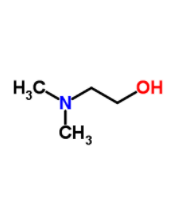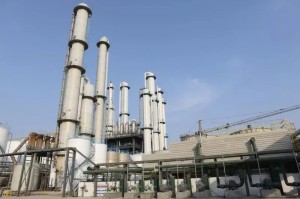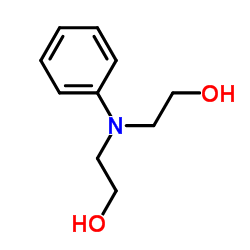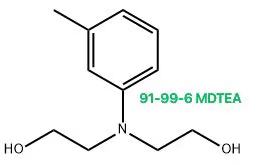-

Morpholine CAS 110-91-8
Morpholine, also known as 1,4-oxazacyclohexane and diethyleneimine oxide, is a colorless alkaline oily liquid with an ammonia odor and hygroscopicity. It can evaporate with water vapor and is miscible with water. Soluble in acetone, benzene, ether, pentane, methanol, ethanol, carbon tetrachloride, propylene glycol and other organic solvents。
Morpholine contains secondary amine groups and has all the typical reaction characteristics of secondary amine groups. It reacts with inorganic acids to form salts, reacts with organic acids to form salts or amides, and can perform alkylation reactions. It can also react with ethylene oxide, ketones or perform Willgerodt reactions.
Due to the unique chemical properties of morpholine, it has become one of the fine petrochemical products with important commercial uses. It can be used to prepare rubber vulcanization accelerators, rust inhibitors, anti-corrosion agents, and cleaning agents such as NOBS, DTOS, and MDS. , descaling agents, analgesics, local anesthetics, sedatives, respiratory system Chemicalbook and vascular stimulants, surfactants, optical bleaches, fruit preservatives, textile printing and dyeing auxiliaries, etc., in rubber, medicine, pesticides, dyes, coatings, etc. The industry has a wide range of uses. In medicine, it is used to produce many important drugs such as morpholino, virospirin, ibuprofen, aphrodisiac, naproxen, diclofenac, sodium phenylacetate, etc.
-

N,N-Diethyl-m-toluamide DEET CAS :134-62-3 PURITY : >99% Insect repellent
N,N-Diethyl-m-toluamide
CAS: 134-62-3
PURITY ≥99%
Molecular formula :C12H17NO
NO 191.27
EINECS number 223-055-4
Port: any port in china
Packing:according to the clients requirement
Storage: Store in dry, dark and ventilated place.
Transportation: by sea or by air
payment methods: L/C, T/T, D/A, D/P, O/A, paypal, western union etc.accept all payment. -

N,N-Dimethyl-p-toluidine CAS: 99-97-8 High Purity 99% /sample is free/DA 90 days-
Product Name: N,N-Dimethyl-p-toluidine
CAS: 99-97-8
Molecular formula: C9H13N
Molecular weight 135.21
EINECS No.: 202-805-4
Purity:≥99%
Brand:MIT -IVY INDUSTRY CO.,LTD
Other names:N,N,4-TRIMETHYLBENZENAMINE;N,N-DIMETHYL-4-METHYLANILINE;N,N-DIMETHYL-4-TOLUIDINE;N,N-DIMETHYL-PARA-TOLChemicalbookUIDINE;N,N-DIMETHYL-P-TOLUIDINE;Benzeneamine,N,N,4-trimethyl-;dimethyl-4-toluidine;Dimethyl-p-toluidine
Appearance: colorless transparent liquid.
Application:Used to make self-setting dental tray water
Port: any port in china
Packing: 200kg/drum OR according to the clients requirement
Storage: Store in dry, dark and ventilated place.
Transportation: by sea or by air
payment methods: L/C, T/T, D/A, D/P, O/A, paypal, western union etc.accept all payment. -

N,N-dimethylethanolamine CAS: 108-01-0 PURITY : 99%
N,N-dimethylethanolamine CAS: 108-01-0
It is a colorless liquid with a pungent odor. Odor threshold: 0.25 ppm. Molecularweight 5 89.16; Boiling point =133℃; Freezing/Meltingpoint=259℃; Flash point =41℃ (oc); Autoignitiontemperature 5=295℃. Explosive limits: LEL 5=1.6%;UEL 5=11.9%. Hazard Identification (based on NFPA-704M Rating System): Health 2, Flammability 2, Reactivity 0.Soluble in water.
It is also known as dimethylaminoethanol. Studies indicate skin-firming properties, and an ability to reduce the appearance of fine lines and wrinkles as well as dark circles under the eyes. It is considered anti-aging, and antiinflammatory, and has exhibited free-radical scavenging activity. Also used as corrosion inhibitor, anti-scaling agent, paint additive, coating additive and solids separation agent. It is also used as an intermediate for active pharmaceutical ingredients and dyes. It serves as a curing agent for polyurethanes and epoxy resins. Further, it is used as an additive to boiler water. In addition to this, it is used therapeutically as a CNS stimulant.
-

N,N-Diethylaniline CAS:91-66-7 purity:99% Dye intermediates, latex accelerators, pharmaceuticals, pesticides
N,N-Diethylaniline
CAS: 91-66-7
PURITY ≥99%
Molecular formula C10H15N
NO 149.23
EINECS number 202-088-8
Port: any port in china
Packing:according to the clients requirement
Storage: Store in dry, dark and ventilated place.
Transportation: by sea or by air
payment methods: L/C, T/T, D/A, D/P, O/A, paypal, western union etc.accept all payment. -

CAS NO.94-34-8 N-Cyanoethyl-N-methylaniline/High quality/Best price/In stock PURITY 99%
Product name: N-Cyanoethyl-N-methylaniline
CAS: 94-34-8
Molecular formula: C10H12 N2
Molecular weight: 160.219
EINECS No.: 202-325-5
Purity:≥99%
Density: 1.035g/cm3
PSA: 27.03000
LogP: 2.03648
Melting Point: N/A
Boiling Point: 313 ºC
Flash Point: 125-127°C/4mm
Safety:S26;S36
Risk Code: R20/21/22;R36/37/38
Brand:MIT -IVY INDUSTRY CO.,LTD
Other names:Propionitrile,3-(N-methylanilino)- (6CI,7CI,8CI); N-(2-Cyanoethyl)-N-methylaniline;N-Methyl-N-(2-cyanoethyl)aniline; N-b-Cyanoethyl-N-methylaniline; NSC 73689; NSC 91616; b-(N-Methylanilino)propionitrile
Port: any port in china
Packing:according to the clients requirement
Storage: Store in dry, dark and ventilated place.
Transportation: by sea or by air
payment methods: L/C, T/T, D/A, D/P, O/A, paypal, western union etc.accept all payment. -

CAS NO.872-50-4 N-methyl-2-pyrrolidone/High quality/Best price/In stock
Product name: N-methyl-2-pyrrolidone
CAS: 872-50-4
Molecular formula: C5H9NO
Molecular weight: 99.1326
EINECS No.: 212-828-1
Purity:≥99%
Density: 1.033 g/cm3
PSA: 20.31000
LogP: 0.17650
Melting Point: -24 °C
Boiling Point: 201.999 °C at 760 mmHg
Flash Point: 86.111 °C
Safety: 41
Risk Code:45-65-36/38
Brand:MIT -IVY INDUSTRY CO.,LTD
Other names:2-Pyrrolidinone,1-methyl-;1-Methyl-5-pyrrolidinone;1-Methylazacyclopentan-2-one;1-Methylpyrrolidone;AgsolEx 1;M-Pyrol;Microposit 2001;N 0131;N-Methyl-2-ketopyrrolidine;N-Methyl-2-pyrrolidinone;N-Methyl-a-pyrrolidinone;N-Methylbutyrolactam;N-Methylpyrrolidone;NMP;NSC 4594;Pharmasolve;Pyrol M;SL 1332;N-Methyl-2-Pyrrolidone(NMP);N-methyl-pyrrolidone;
Port: any port in china
Packing:according to the clients requirement
Storage: Store in dry, dark and ventilated place.
Transportation: by sea or by air
payment methods: L/C, T/T, D/A, D/P, O/A, paypal, western union etc.accept all payment. -

CAS NO.3077-12-1 N,N-Bis(2-hydroxyethyl)-p-toluidine/High quality/Best price/In stock
Product name: N,N-Bis(2-hydroxyethyl)-p-toluidine
CAS: 3077-12-1
Molecular formula:C11H17NO2
Molecular weight: 195.261
EINECS No.:221-359-1
Purity:≥99%
Density: 1.137 g/cm3
PSA: 43.70000
LogP: 0.78600
Melting Point: 49-53 °C(lit.)
Boiling Point: 339 °C at 760 mmHg
Flash Point: 208.9 °C
Safety:26-36-61-39
Risk Code: 36/37/38-52/53-41-37/38-22
Brand:MIT -IVY INDUSTRY CO.,LTD
Other names:Ethanol,2,2'-(p-tolylimino)di- (6CI,7CI,8CI);2,2'-(p-Tolylimino)diethanol;Diethylol-p-toluidine;N,N-Bis(2-hydroxyethyl)-4-methylaniline;N,N-Bis(2-hydroxyethyl)-4-toluidine;N,N-Bis(2-hydroxyethyl)-p-toludine;N,N-Bis(2-hydroxyethyl)-p-toluidine;N,N-Bis(b-hydroxyethyl)-p-toluidine;N,N-Di(b-hydroxyethyl)-p-toluidine;N,N-Diethanol-p-methylphenylamine;N,N-Diethanol-p-toluidine;N-(4-Methylphenyl)diethanolamine;N-(p-Methylphenyl)-N,N-diethanolamine;N-(p-Methylphenyl)diethanolamine;N-p-Tolyldiethanolamine;NSC 103354;PT 2HE;Plexilith 492;
Port: any port in china
Packing:according to the clients requirement
Storage: Store in dry, dark and ventilated place.
Transportation: by sea or by air
payment methods: L/C, T/T, D/A, D/P, O/A, paypal, western union etc.accept all payment. -

CAS NO.696-44-6 N-Methyl-m-toluidine/High quality/Best price/In stock
Product name:N-Methyl-m-toluidine
CAS:696-44-6
Molecular formula C8H11N
Molecular weight: 121.182
EINECS No.: 211-795-0
Purity:≥99%
Density: 0.968 g/cm3
PSA:12.03000
LogP: 2.10970
Melting Point: -10.08°C (estimate)
Boiling Point: 204.7 °C at 760 mmHg
Flash Point:77.3 °C
Safety: 28-36/37-45-61-28A
Risk Code: 23/24/25-33-52/53
Brand:MIT -IVY INDUSTRY CO.,LTD
Other names:m-Toluidine,N-methyl- (6CI,7CI,8CI);N,3-Dimethylaniline;N,3-Dimethylbenzenamine;N-(3-Methylphenyl)methylamine;N-Methyl(3-methylphenyl)amine;N-Methyl-N-(3-methylphenyl)amine;N-Methyl-N-(m-tolyl)amine;N-Methyl-m-toluidine;NSC 9396;m,N-Dimethylaniline;
Port: any port in china
Packing:according to the clients requirement
Storage: Store in dry, dark and ventilated place.
Transportation: by sea or by air
payment methods: L/C, T/T, D/A, D/P, O/A, paypal, western union etc.accept all payment. -

CAS NO. 120-07-0 N-Phenyldiethanolamine N,N-DIHYDROXY ETHYL ANILINE (NNDHEA) Manufacturer/High quality/Best price/In stock /sample is free/DA 90DAYS
Product Name:N,N-Dihydroxyethylaniline
CAS: 120-07-0
Molecular formula:C10H15NO2
Molecular weight: 181.23
EINECS No.: 204-368-5
Density: 1.165
Melting point: 55-59°C
Boiling point: 270°C
Refractive index: 1.5464 (estimate)
Flash point: 200°C
Other names:2,2'-(Phenylimino)diethanol;N,N-Dihydroxy ethyl aniline (NNDHEA);N-Phenyldiethanolamine;2-[N-(2-hydroxyethyl)anilino]ethanol;N,N-Dihydroxy ethyl aniline (NNDHEA);N-Phenyldiethanolamine;2,2μ-(Phenylimino)diethanol,N,N-Bis(2-hydroxyethyl)aniline,N-Phenyl-2,2μ-iminodiethanol;2,2'-(phenylaChemicalbookzanediyl)diethanol;3-Phenyl-3-azapentane-1,5-diol;Anilinodiethanol;N,N-Bis(2-hydroxyethyl)benzenamine
Purity:≥99%
Brand:MIT -IVY INDUSTRY CO.,LTD
Appearance: colorless to slightly yellow crystals
Uses:Used as intermediates of medicine and dyes
Port: any port in china
Packing: according to the clients requirement
Storage: Store in dry, dark and ventilated place.
Transportation: by sea or by air
payment methods: L/C, T/T, D/A, D/P, O/A, paypal, western union etc.accept all payment. -

2-(N-Ethyl-m-toluidino)ethanol CAS: 91-88-3 High Purity 99% /sample is free/DA 90 days-
Product Name: 2-(N-Ethyl-m-toluidino)ethanol
CAS: 91-88-3
Molecular formula: C11H17NO
Molecular weight: 179.26
EINECS No.: 202-105-9
Purity:≥99%
Brand:MIT -IVY INDUSTRY CO.,LTD
Other names:2-(N-ETHYL-M-TOLUIDINO)ETHANOL;3-METHYL-N-ETHYL-N-BETA-HYDROXYETHYLANILINE;3-METHYL-N-ETHYL-N'-HYDROXYETHYLANILINE;N-ETHYL-N-HYDROXYETHYL-META-TOLUIChemicalbookDINE;N-ETHYL-N-HYDROXYETHYL-M-TOLUIDINE;N-ETHYL-N-(2'-HYDROXYETHYL)-3-TOLUIDINE;N-ETHYL-N-(2-HYDROXYETHYL)-M-TOLUIDINE;2-(ethyl(m-tolyl)amino)ethanol
Appearance: Powder to block to transparent liquid, white or colorless to yellow to orange.
Application:Used as dye intermediates, such as Disperse Blue 102, 106, Disperse 32, 98, 109, etc. Color film developer raw material.
Port: any port in china
Packing: 200kg/drum OR according to the clients requirement
Storage: Store in dry, dark and ventilated place.
Transportation: by sea or by air
payment methods: L/C, T/T, D/A, D/P, O/A, paypal, western union etc.accept all payment. -

m-Tolyldiethanolamine CAS: 91-99-6
m-Tolyldiethanolamine,also known as DEET (diethylamide N,N-dimethyl-3-hydramide), is a common insect repellent. It is soluble in organic solvents such as ester, alcohol, and ether, and slightly soluble in water. This compound has good heat resistance and light resistance.
m-Tolyldiethanolamine is mainly used as an insect repellent to prevent bites and harassment from mosquitoes, ticks, fleas, grasshoppers and other insects. Its efficacy lasts for a long time and has a high repellent effect on mosquitoes and other insects. It is widely used in outdoor activities, wilderness exploration and military protection and other fields.
There are many methods for preparing N,N-bishydroxyethyl m-toluidine. One of the commonly used methods is to react m-toluidine and formamide in the presence of an alkaline catalyst. Specific steps are as follows:
1. React formamide with m-toluidine under alkaline conditions to generate N-formyl m-toluidine.
2. Heat the reaction product under acidic conditions to convert N-formyl m-toluidine into N,N-bishydroxyethyl m-toluidine.





